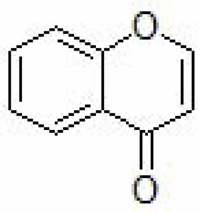From Hybrids to New Scaffolds: The Latest Medicinal Chemistry Goals in Multi-target Directed Ligands for Alzheimer's Disease
- PMID: 32928087
- PMCID: PMC8686302
- DOI: 10.2174/1570159X18666200914155951
From Hybrids to New Scaffolds: The Latest Medicinal Chemistry Goals in Multi-target Directed Ligands for Alzheimer's Disease
Abstract
Alzheimer's disease (AD) is a chronic, progressive, and fatal neurodegenerative disorder affecting cognition, behavior, and function, being one of the most common causes of mental deterioration in elderly people. Once thought as being just developed because of β amyloid depositions or neurofibrillary Tau tangles, during the last decades, numerous AD-related targets have been established, the multifactorial nature of AD became evident. In this context, the one drug-one target paradigm has resulted in being inefficient in facing AD and other disorders with complex etiology, opening the field for the emergence of the multitarget approach. In this review, we highlight the recent advances within this area, emphasizing in hybridization tools of well-known chemical scaffolds endowed with pharmacological properties concerning AD, such as curcumin-, resveratrol-, chromone- and indole-. We focus mainly on well established and incipient AD therapeutic targets, AChE, BuChE, MAOs, β-amyloid deposition, 5-HT4 and Serotonin transporter, with the aim to shed light about new insights in the AD multitarget therapy.
Keywords: 5-HT receptors; Alzheimer disease; cholinesterase inhibitors; monoamine oxidase.; multi-target directed ligands; serotonin transporter; tau protein; β – amyloid aggregation.
Copyright© Bentham Science Publishers; For any queries, please email at epub@benthamscience.net.
Figures



































Similar articles
-
Management of oxidative stress and other pathologies in Alzheimer's disease.Arch Toxicol. 2019 Sep;93(9):2491-2513. doi: 10.1007/s00204-019-02538-y. Epub 2019 Aug 22. Arch Toxicol. 2019. PMID: 31440798 Review.
-
Rational drug design strategies for the development of promising multi-target directed indole hybrids as Anti-Alzheimer agents.Bioorg Chem. 2022 Oct;127:105941. doi: 10.1016/j.bioorg.2022.105941. Epub 2022 Jun 10. Bioorg Chem. 2022. PMID: 35714473 Review.
-
Anti-cholinesterase hybrids as multi-target-directed ligands against Alzheimer's disease (1998-2018).Bioorg Med Chem. 2019 Mar 15;27(6):895-930. doi: 10.1016/j.bmc.2019.01.025. Epub 2019 Jan 25. Bioorg Med Chem. 2019. PMID: 30744931 Review.
-
Tacrine-Natural-Product Hybrids for Alzheimer's Disease Therapy.Curr Med Chem. 2020;27(26):4392-4400. doi: 10.2174/0929867325666180403151725. Curr Med Chem. 2020. PMID: 29611473 Review.
-
Recent Developments in Tacrine-based Hybrids as a Therapeutic Option for Alzheimer's Disease.Mini Rev Med Chem. 2023;23(7):869-880. doi: 10.2174/1389557523666221201145141. Mini Rev Med Chem. 2023. PMID: 36464869 Review.
Cited by
-
Therapeutic Options in Alzheimer's Disease: From Classic Acetylcholinesterase Inhibitors to Multi-Target Drugs with Pleiotropic Activity.Life (Basel). 2024 Nov 26;14(12):1555. doi: 10.3390/life14121555. Life (Basel). 2024. PMID: 39768263 Free PMC article.
-
Sustainable Drug Discovery of Multi-Target-Directed Ligands for Alzheimer's Disease.J Med Chem. 2021 Apr 22;64(8):4972-4990. doi: 10.1021/acs.jmedchem.1c00048. Epub 2021 Apr 8. J Med Chem. 2021. PMID: 33829779 Free PMC article.
-
Recent Advances in the Search for Effective Anti-Alzheimer's Drugs.Int J Mol Sci. 2024 Dec 27;26(1):157. doi: 10.3390/ijms26010157. Int J Mol Sci. 2024. PMID: 39796014 Free PMC article. Review.
-
Efficient synthesis of 1,2-disubstituted benzimidazoles catalyzed by phosphoric acid as a homogeneous catalyst under mild conditions and investigating their anti-diabetes properties through molecular docking studies and calculations.RSC Adv. 2023 Dec 8;13(51):35781-35790. doi: 10.1039/d3ra07156a. eCollection 2023 Dec 8. RSC Adv. 2023. PMID: 38074406 Free PMC article.
-
Unveiling the Multitarget Anti-Alzheimer Drug Discovery Landscape: A Bibliometric Analysis.Pharmaceuticals (Basel). 2022 Apr 28;15(5):545. doi: 10.3390/ph15050545. Pharmaceuticals (Basel). 2022. PMID: 35631371 Free PMC article.
References
-
- Alzheimer’s Disease International. World Alzheimer Report 2019: Attitudes to Dementia. London: Alzheimer’s Disease International; 2019.
Publication types
MeSH terms
Substances
LinkOut - more resources
Full Text Sources
Other Literature Sources
Medical

